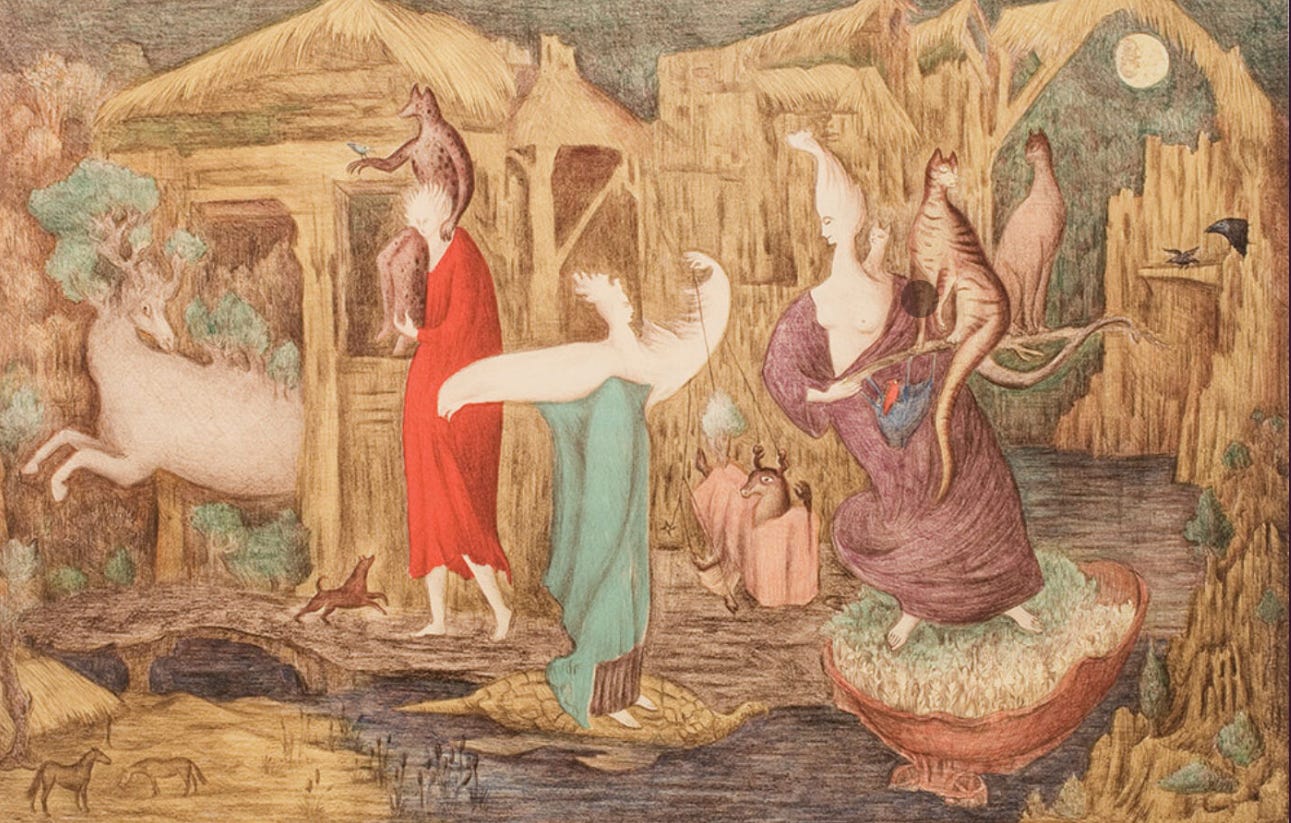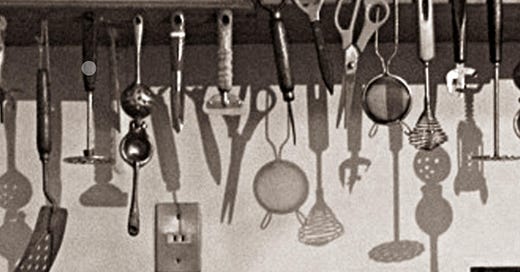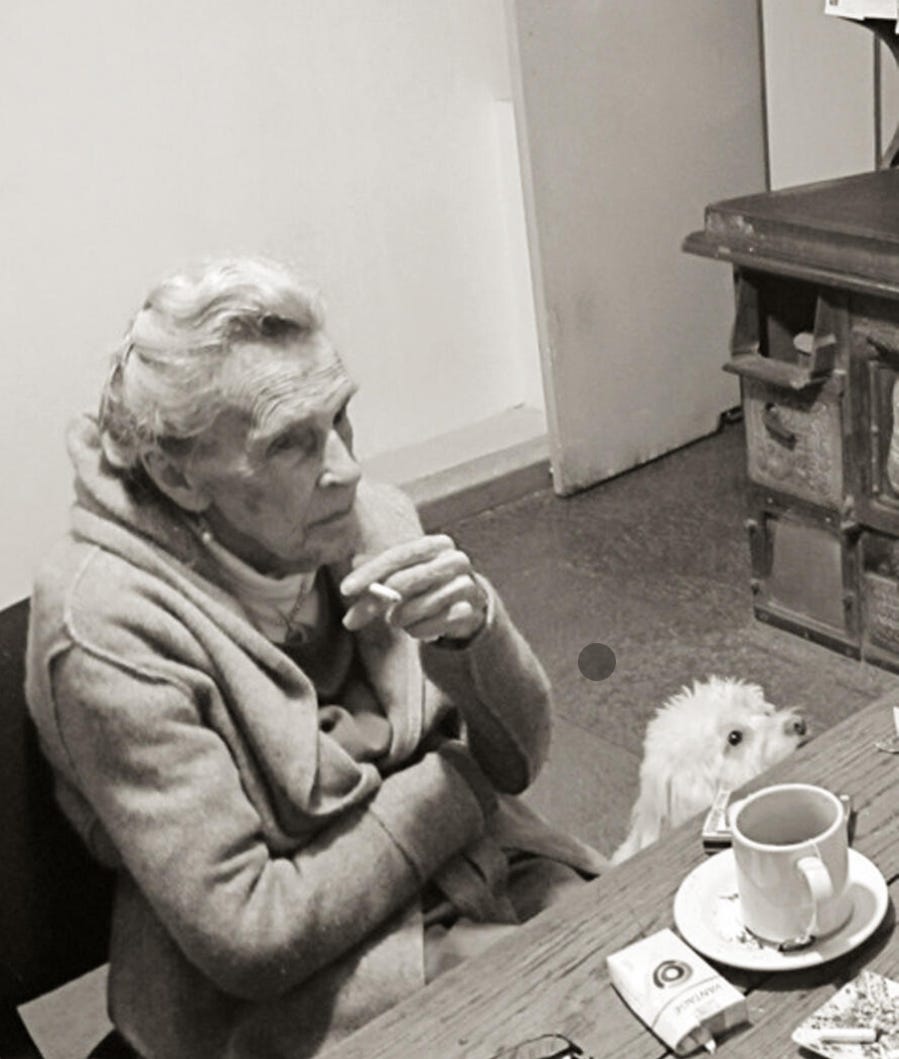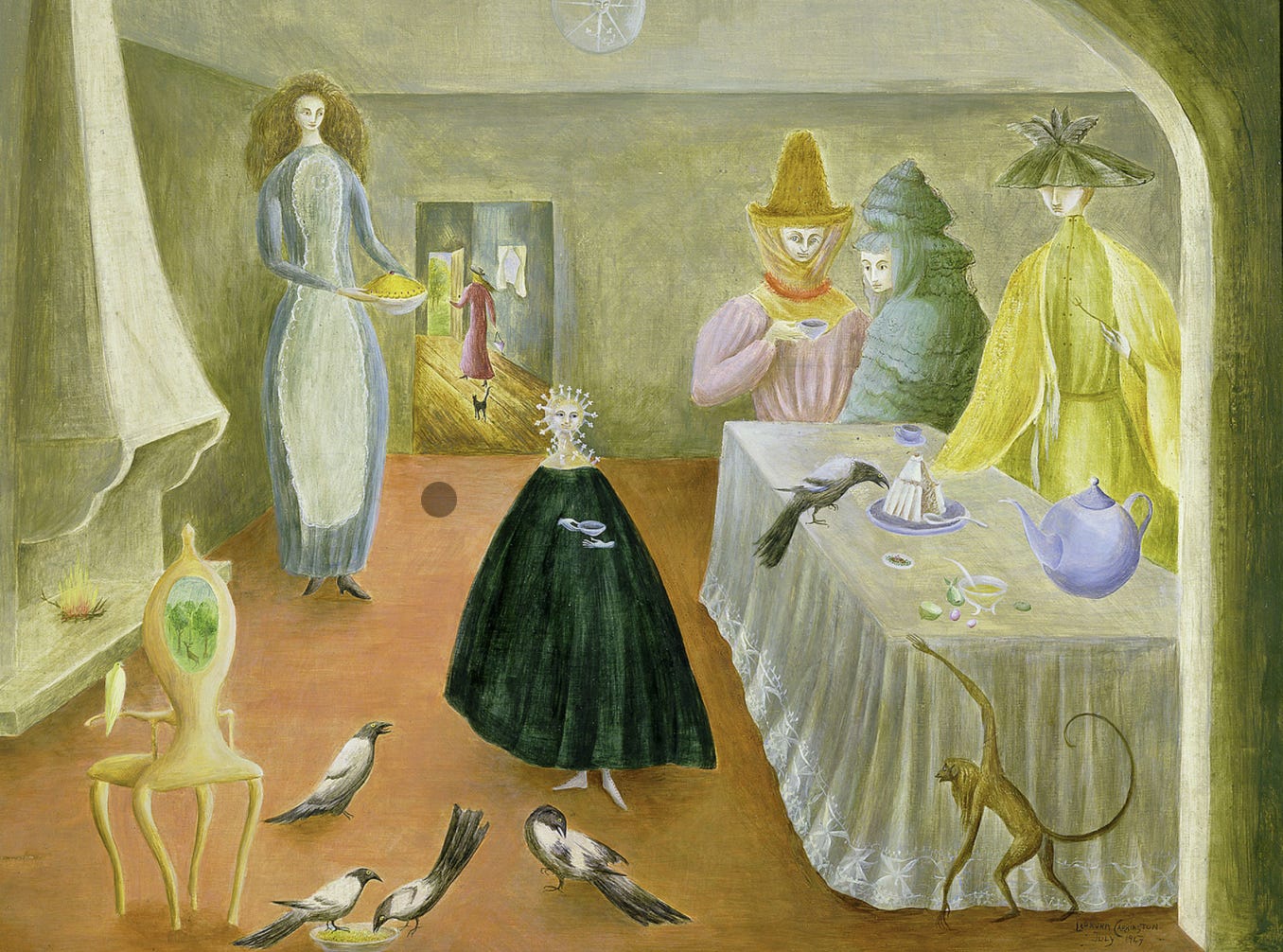Food & Eating in Leonora Carrington’s short stories and paintings
Exploring more than Leonora Carrington’s Kitchen
The British-born but naturalised Mexican surrealist painter, novelist and extraordinare Leonora Carrington OBE (1917- 2011) is finally being celebrated internationally and I am all for it! After I listened to The Great Women Artists podcast run by Katy Hessel in dialogue with Chloe Aridjis — a Mexican and American novelist and writer — I was captivated by Leonora's later life in Mexico, her interests in mysticism, the Kabbala, but especially her food symbolism and depictions in her paintings and novels. Diving into a snippet of her world was magical, encouraging me to read more about her kitchen conversations and storytelling.
In 1936, Carrington discovered surrealism while studying art in London. She admired a painting by Max Ernst, met him, and moved to France with him. They lived there until World War II began, leading to his arrest and her escape to Spain. In the podcast, Aridjis mentions that Carrington did not enjoy talking about her time with Ersnt too much for obvious reasons. In France, she completed her self-portrait "The Inn of the Dawn Horse" (1937-38) and her first short story collection "La Maison de la peur" (1938). Carrington developed a unique surrealist style, adding to the movement's diversity. During the war, she reconnected with surrealists in New York, including André Breton. After the war, she settled in Mexico City, while Breton returned to Paris. From the articles I read, it is apparent that Mexico was where Carrington explored depictions around the kitchen table and food symbolism.
The link between food and Carrington's artistic practice is well-documented. Some critics assert, "For Carrington, everything begins in the kitchen" (Chénieux-Gendron 85). Others highlight her experimental approach to cooking: "Together, [Remedios Varo and Carrington] began to experiment with cooking and, with a penchant for experiment and a taste for the ludicrous, they conducted pseudoscientific investigations using the kitchen as their laboratory," noting her particular interest in food rituals and emphasizing the "correspondence between food preparation, magic, and painting" (Aberth 60, 2). Carrington seemingly viewed cooking as an extension of her artistic practice: "The transit of food from the kitchen to the table to consumption was, in particular, likened to alchemical processes of distillation and transformation, which in turn led to associations involving art production" (Aberth, 64-5). Her perspective on food encompasses an obsession with transformation, seeing it as a creative force rather than merely consumed.
The kitchen table is a recurring motif in Leonora Carrington's work, symbolising themes of fertility, aging, the occult, and culinary practice. In Old Maids, the table is surrounded by women having high tea with a monkey and five magpies, blending the arcane and the domestic. At the center, a small figure in a black shroud with a halo of white spikes echoes Catholic imagery, reflecting Carrington's Mexican surroundings from the 1940s. This painting exemplifies her fusion of religious and folkloric symbols. According to the Sainsbury Centre, where the painting resides, Carrington painted The Old Maids in Mexico City, where she lived and worked at Alvaro Obregon 174 in July 1947 after emigrating to Mexico via the United States as a political refugee in 1943. In the painting, an archway leads us into a spacious kitchen with a fireplace and dining table. The room is occupied by three old maids, a tall woman, a mysterious figure, a monkey, and several magpies. They all gather around a beautifully set table for tea, partaking in communal eating. As is typical for the artist, the scene transforms ordinary activities like food preparation and consumption into ritualistic and enigmatic events.
Carrington liked to blur the lines between humans, animals, and food. Her 1974 novel The Hearing Trumpet features an elderly woman who cooks and consumes herself in a climactic scene, then joins a post-apocalyptic community with "cats, werewolves, bees, and goats." This ontological ambiguity, where the need to eat blurs human and animal distinctions, is threatening and disruptive. Carrington's work constantly challenges boundaries, with humans often reverting to primal or feral states. However, Old Maids humorously addresses these boundaries with a bourgeois-style table reimagined as a non-hierarchical meeting place for women, animals, and celestial beings. Thus, the kitchen table represents both mundane middle-class life and esoteric significance.

Her signature object, the cauldron, symbolises how she blends elements of her art, creating new forms through a tangible process of embodiment. In contrast, Breton primarily combined elements of his art using juxtaposition, adhering to the surrealist image's combinatory principle, which ignites the spark that fuels automatism. Leonora's novels have significantly influenced other creative practitioners, researchers, and artists, including the relatively recent Venice Biennial titled "The Milk of Dreams," curated by Cecilia Alemani, directly referencing the artist's book.
I am fascinated by her references to human and non-human relationships, the occult, the kitchen and table depictions, and how she lived in Mexico. I cannot wait to visit her home studio, which has been turned into a museum in Mexico City. This short but insightful article into the psyche of Carrington, with references to the kitchen and food, will also inspire you.
References
Conley, Katharine, Carrington's Kitchen (2013). Papers of Surrealism. https://scholarworks.wm.edu/aspubs/29
“Old Maids by Leonora Carrington .” Sainsbury Centre, 19 July 2024, www.sainsburycentre.ac.uk/art-and-objects/27-the-old-maids/.“Old Maids by Leonora Carrington .” Sainsbury Centre, 19 July 2024, www.sainsburycentre.ac.uk/art-and-objects/27-the-old-maids/.
If you have enjoyed this article and like my substack, please feel free to send it to people who you think will enjoy reading it as well! Thank you!






